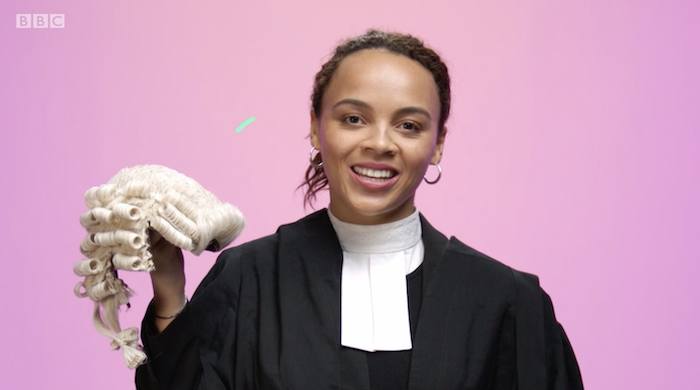
The reasons why lawyers wear wigs are varied and complex. Mostly, they represent a symbol of power and dignity. Other times, they are a part of the costume that the lawyer has selected for his or her appearance. Still other times, they are just for fun.
History
Lawyers wearing wigs in court has a long history. Initially, they were introduced by the French in the 17th century. They were then adopted by European upper classes in the 18th century. Despite their popularity, they eventually faded out of fashion.
Wigs were originally used to disguise baldness, but they soon became a fashion statement. By the middle of the 18th century, a full, shoulder-length wig was required in court.
A bob-wig was introduced in the 1780s, featuring a short tail at the back. In addition to the bob, the sides of the wig would be frizzed. This new style was adopted by civil trials.
After the 1780s, wigs were gradually replaced with gowns. However, they continued to be worn for criminal trials until the 1840s.
While the British courts still wear wigs, many other courts have stopped. One such example is the Scottish court of session, which has not worn wigs since 2013. These days, lawyers in New Zealand, Nigeria, and Kenya wear a black robe or gown when appearing in court. Alternatively, they wear a black sherwani.
As part of a recent exhibition of the Middle Temple Library, London Fashion Week, a collection of historical court dress was on display. These judicial garments were a reminder of the sombre nature of law practice.
Wearing a traditional costume provides a distinctive identity for legal practitioners. It also makes them more distinct from the general public.
The wearing of wigs in court is a tradition that has become popular among both young and old peers. It also enhances the appearance of the lawyer in the courtroom. Although some argue that it makes them appear older, there are also those who feel that it makes them look solemn and stoic.
Nevertheless, lawyers wearing wigs in court have an important role to play in the criminal justice system. Not only do they help to hide the legal practitioners’ identities, but they also protect the judges’ personal safety.
In the United Kingdom, the legal profession has always been seen as a highly regarded and elite one. Even in modern times, it is a field of expertise that requires an aristocratic look.
Symbol of power and dignity
The best way to test the waters is to do a bit of legwork and make the acquaintance of a few seasoned eminences. In the interest of full disclosure, I’ve had my share of bumps, bruises, and bruises of my own. While you’re busy moping the puddles you can ponder over a few aforementioned tees and a tee-hee tee or two. One of my favourite activities in life is to watch a few birds and bats, or at the very least their corresponding prey. This, my favourite vocation, has been a tad tumultuous over the past few years, but that is a story for another day.
They are a part of ones own costume
The tradition of lawyers wearing wigs is a part of the history of the common law. It started in the 17th century and is still practiced today. Wearing wigs was adopted as a costume for advocates because it was fashionable.
Before wearing a wig became popular, lawyers and advocates would wear headgear, which is usually a band worn on the head. This was a traditional dress for the legal profession, and was also considered to be a symbol of distinction.
Wigs were first used in the courtroom around 1685. By the end of the 17th century, they were becoming a staple in the legal field. In the United Kingdom, barristers wore wigs as part of their costume.
The wearing of wigs also served to separate lawyers from the defendants in court. This was especially important in the case of criminals. While other members of the legal profession began wearing gowns and other formal attire, attorneys were required to wear wigs.
Even though the wig is no longer a requirement in the courts, the practice remains. Until 2011, lawyers and judges in Ireland wore wigs. However, in the civil and family courts, wigs are no longer needed.
A recent exhibition at the Middle Temple Library in London outlined the history of the wig in the British courts. Ede & Ravenscroft is a company that sells wigs and gowns. They have an online Sartorial History of the Legal Wig & Robe.
Lawyers and advocates in the UK and other countries continue to wear wigs as part of their costume. Some believe that wearing a wig enhances their anonymity in court. Others argue that a wig enforces the authority of the law.
Despite the fact that some judges in the UK have ditched wigs, others remain committed to the tradition. For example, Judge John McNamara, a senior barrister with over 30 years of experience, specializes in criminal defense.
Wearing a wig is an essential part of the professional look for lawyers and advocates. However, it is not necessary for them to wear a wig in the civil or family courts of the UK.

